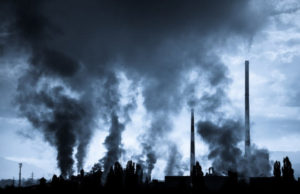By ROBYN WILSON
Rural Nepalese villages are putting a number of innovative green measures in place to safeguard their future.
Landlocked within the rocky Himalayan region, Nepal is extremely vulnerable not only to climate change but to various natural disasters.
In April 2015, the country was left devastated by an earthquake that measured up to 8.1 in magnitude (within the most severe earthquake class bracket) and killed nearly 9,000 people.
Rainwater harvesting
According to the United Nations Programme in Nepal, there were more the 27,000 deaths in the country between 1971-2007 due to natural disasters – that’s an average of two deaths a day.
An increase in climate change and the future risks presented by natural disasters place an urgency of Nepalese villages to become more resilient and adaptable to environmental change.
Agriculture and energy are the two main areas where villagers are implementing a mix of traditional and innovative measures to combat this, including clean energy projects, organic farming methods, recycling schemes and the creation of a self-sustaining eco-village.
“We have rainwater harvesting, solar energy and use cow dung and urine to create organic pesticides,” begins Bishwo Raj Adhikari – the creator of the Annapurna Eco-village.
“There used to be lots of chemical usage and artificial fertilisers in my village but we have started a campaign to lower the use of chemicals, which is helping our soil and improving our lifestyle.”
More mosquitos
Bishwo and his family set up the village, which is located at the foot of the Himalayas’ Annapurna range, in 2004 as a lodge for trekkers as well as a meditation and yoga retreat for tourists who want to escape the city and experience a little nature but it is fair to say that the village is much more than a tourist get-away.
The family has created an impressive farm, growing a variety of fruits, vegetables, coffee and sugar cane, whilst using their livestock’s waste to create organic pesticides and fertilizers.
A trained porter and trekker for over 20 years, Bishwo knows the Himalayan region intimately and explains how the environment in which he has spent a large part of his life has change significantly over the years.
Bishwo says that in traditionally cooler regions like the lower Mustang district, he has started seeing an increase in different species, which are typically drawn to warmer climates.
“I see more mosquitos now in Jomsom when I go trekking as well as more leeches and snakes. This has changed a lot since 1991 when I started as a porter.”
First stopover
Climate change is also having a negative effect on region’s crops, according to Bishwo, who says Hemja village, which is famous for its orange groves, nowadays has trouble growing orange trees at all.
Tourism is also playing a part in this environmental change as well as a lack of environmental awareness among some of the villages – particularly when it comes to littering.
There are no bins available along the trekking routes and there are no formal recycling schemes in place within the communities, which leads to many tourists and locals frequently littering plastic bottles and packaging along the trekking route.
Bishwo and his family have set up a recycling scheme at their village to tackle this and are reaching out to nearby families, schools and hospitals to increase environmental awareness and encourage people to reduce their waste.
Elsewhere, an innovative scheme to tackle littering is taking place in the picturesque village of Ghandruk, which is a popular first stopover for trekkers on their way to Annapurna.
Micro hydropower
Local mothers, with help from The Alternative Energy Promotion Centre and the Annapurna Conservation Project, have begun to sell filtered jars of water to locals and trekkers.
The scheme has had a number of benefits. Not only does it utilise the electricity created by the region’s Bhurgyu Khola Micro Hydropower for the filtration system but it reduces the need for plastic water bottles and empowers the local women, who run the business.
Other clean energy initiatives in the region have been making headway. The United Nations Development Programme in Nepal is now well in to its Renewable Energy for Rural Livelihood project, which started in 2014.
The scheme, which runs until 2019, was set up to provide electricity through renewable energy schemes to the 30 per cent of rural Nepalese households, who have no access to power.
Among its achievements is the completion of 423 micro hydropower plants across Nepal, which collectively have a capacity of 9.1MW and have connected over 94,131 households.
Nature and climate
The RERL scheme has also installed two biomass gasifiers in Sarlahi District, on the south west border of Nepal, and has plans to build further hydropower plants and solar PV systems across the country.
Clearly there is plenty of scope for Nepal to lead the way on clean energy, with an abundance of mountains and hills as well as the potential to replicate some of the green initiatives that are already taking place in certain villages.
Bishwo hopes that his eco-village can become a model for other Nepalese families in the region. With further support from the government Bishwo believes that green schemes “could save Nepal’s culture, nature and climate”. ”
Source: The Ecologist














